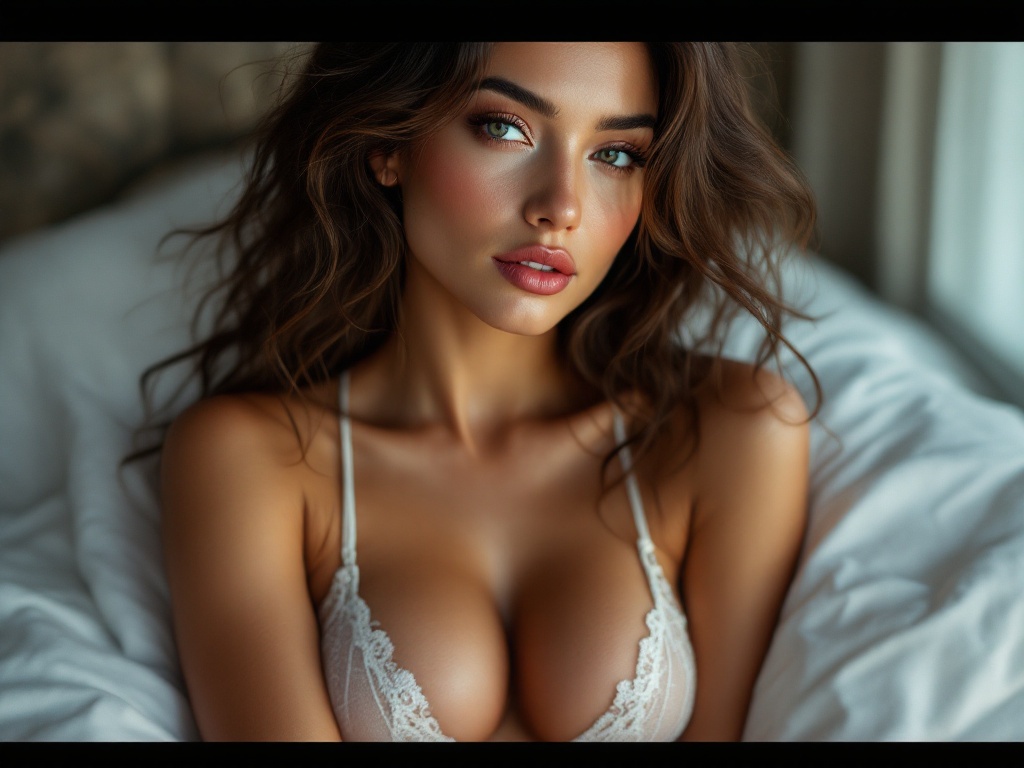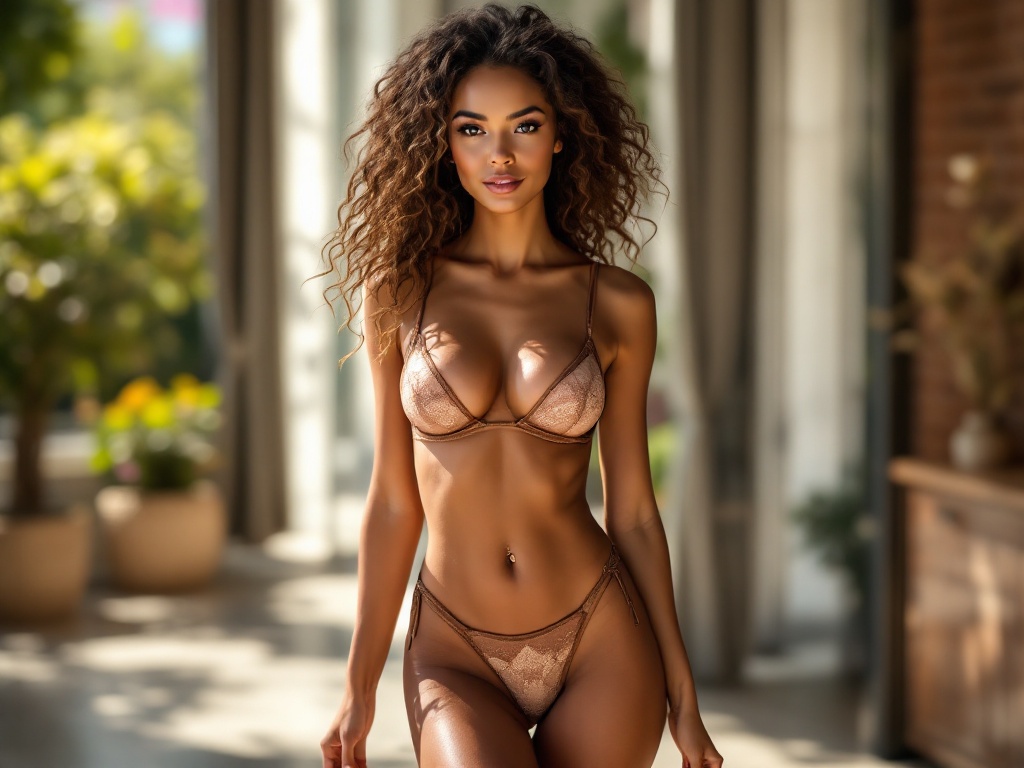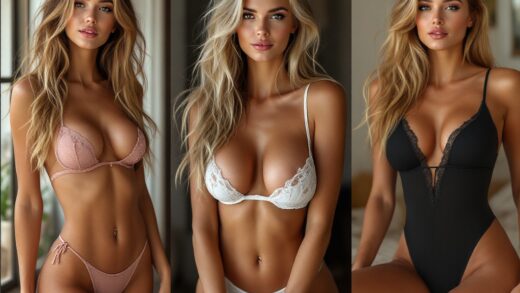The shifting terrain of AI-generated erotic visuals presents both vast opportunities and daunting challenges, particularly in crafting visually striking imagery. A pivotal factor that determines the superiority of this digital art form lies in how textures transition between fabric and skin. Achieving lifelike visual results demands a fusion of sophisticated methods and a nuanced comprehension of how AI interprets these textures. Artists and developers can harness these strategies through the use of Undress AI to produce captivating representations that ignite the viewer’s imagination. In this piece, we will delve into effective techniques and insights for texture translation that can elevate your AI masterpieces. The realm of sensual imagery is within your grasp – let’s explore the complex art of fabric-to-skin texture translation.
Considering texture often evokes a sensory experience, stirring specific feelings and narratives. This tactile dimension is crucial in erotic visuals, amplifying the emotional resonance of the artwork. To translate textures proficiently, it’s important to grasp the foundational processes involved. This article will offer a detailed breakdown of the fabric-to-skin translation process, showcase key techniques available, and detail practical steps to execute them using Undress AI.

Grasping the Fabric-to-Skin Translation Process
Transforming textures from cloth to skin is a journey that involves a symphony of intricate techniques. Central to this process is machine learning, empowering AI to learn and evolve by exposing it to extensive datasets. This learning process not only informs AI about the visual nuances of different textures but also improves reproduction accuracy. Moreover, high-quality input data’s importance cannot be overstated. Images of excellent quality and varied texture maps form the cornerstone of successful translations.
The Machine Learning Factor
Machine learning serves as the lifeblood of texture mapping, enabling AI to identify patterns and differences among various materials. By evaluating existing textures, AI refines its comprehension, ultimately leading to enhanced generated images. This cutting-edge technology is vital in crafting realistic transitions that deeply capture the viewer’s attention. As AI’s learning progresses, the results increasingly reach new pinnacles of detail and realism.
The Imperative of Quality Input Data
The time-honored saying “garbage in, garbage out” holds particularly true in the AI domain. The caliber of input data directly affects Undress AI’s ability to perform fabric-to-skin translations effectively. Consequently, artists and developers must focus on acquiring high-resolution images and varied samples that mirror both fabric and skin textures. This diversity facilitates a more thorough learning process, ultimately producing superior results.

Essential Techniques for Texture Translation
To achieve successful texture translations, several methods can be employed. These techniques span from basic texture mapping approaches to state-of-the-art machine learning implementations. Each method uniquely contributes to the final quality of AI-generated visuals.

Texture Mapping Approaches
Texture mapping is a crucial phase in the fabric-to-skin translation process. Below are widely-utilized texture mapping approaches that can enhance your output:
- UV Mapping: Applying 2D images to a 3D surface using UV coordinates allows for precise texture alignment.
- Bump Mapping: This technique adds perceived texture detail without elevating polygon counts, making models seem more genuine.
- Normal Mapping: Similar to bump mapping, normal mapping employs RGB values to emulate light interaction, adding depth to surfaces.
Machine Learning Enhancements
Machine learning can greatly enhance the process, leading to refined texture generation. Here are a few remarkable techniques:
- Generative Adversarial Networks (GANs): A formidable tool in texture creation, GANs use a generator to produce images and a discriminator to assess them, resulting in high-caliber output.
- Style Transfer Techniques: These methods can impose the visual styles of one texture onto another, fostering experimental and artistic outcomes.
| Approach | Explanation |
|---|---|
| UV Mapping | Mapping a 2D image precisely onto a 3D surface. |
| Bump Mapping | Introducing texture nuances without increasing polygon numbers. |
| GANs | Employing a generator and discriminator for lifelike texture creation. |
Executing in Undress AI
The adept application of the aforementioned techniques within Undress AI is vital for achieving remarkable outcomes. Here’s a step-by-step guide:
- Choose Superior Textures: Focus on selecting images noted for their clarity and high resolution.
- Engage UV Mapping: Apply UV coordinates for meticulous texture application.
- Train GANs: Continuously train with varied datasets to create refined textures.
- Modify Lighting Configurations: Experiment with different lighting setups to highlight your textures exquisitely.
- Assess and Refine: Regularly evaluate your outputs and adjust your approach based on observations.
Closing Thoughts
Mastering the techniques for fabric-to-skin texture translation in Undress AI can elevate AI-generated erotic art to exhilarating new heights. An attentive strategy that blends machine learning, meticulous texture mapping, and lighting expertise can produce visually breathtaking results. By applying these methods and consistently refining your process, you not only enhance your skillset but also push the boundaries of digital art innovation in the world of erotic imagery.
FAQ
- What is Undress AI? Undress AI is a specialized AI platform designed to generate realistic erotic imagery by shifting textures between fabric and skin.
- Why is texture translation pivotal in erotic AI art? Texture translation is fundamental for realism, ensuring that the created images resonate with audiences and offer an immersive experience.
- What are the top practices for input data selection? Always opt for high-resolution, diverse datasets that capture various fabric and skin types for superior outcomes.
- How can GANs enhance texture generation? GANs can learn and imitate real-world textures, allowing the creation of high-fidelity, lifelike visuals that seamlessly blend fabric and skin.
- Is lighting crucial in texture translation? Absolutely, lighting is integral to how textures appear, as different lighting conditions create varied realism levels.



